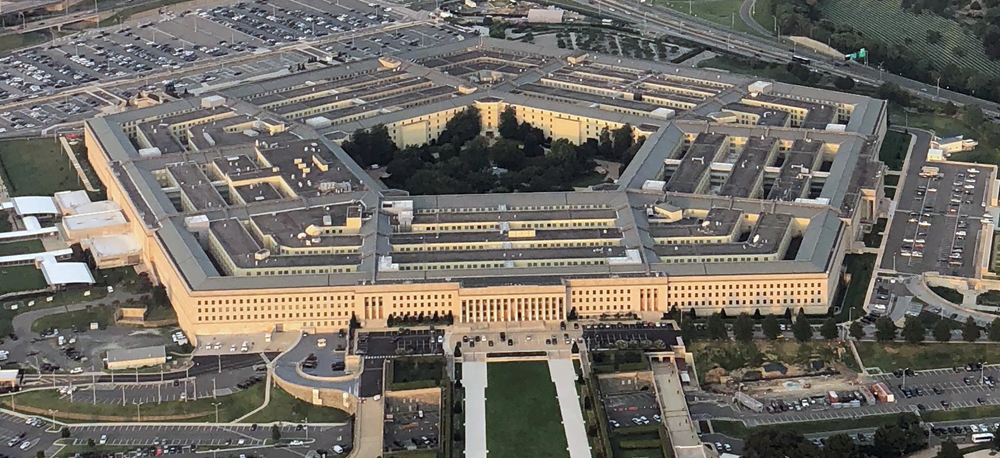A famous representation of U.S. military might, the Pentagon is an architectural wonder and an important historical site. This five-sided building, close to the nation’s capital in Arlington, Virginia, is essential for managing and coordinating the U.S. Department of Defence (DoD). It is more than just an office complex. This article will give a thorough overview of the Pentagon’s history, examine the architectural significance of the building, and evaluate its layout and aesthetics to comprehend the building’s function in American culture.
The Pentagon Building: An In-Depth Analysis
The Pentagon was established in the early 1940s as the U.S. prepared for World War II. There were considerable inefficiencies in military operations at the time due to the War Department’s dispersion across 17 locations in and around Washington, D.C. As the United States prepared to enter the war, Secretary of War Henry L. Stimson saw the importance of establishing a single headquarters from which military operations and intelligence could be efficiently coordinated. To deal with this urgent matter, Brigadier General Brehon B. Sommervell was assigned in July 1941 to establish a new and unified military headquarters. He had the bright idea of creating a sizable structure to house the War Department’s functions. Fast-tracking the design process led to the groundbreaking of the Pentagon on September 11, 1941—coincidentally, the 60th anniversary of the building’s subsequent attack during the September 11, 2001 terrorist occurrences.
Construction progressed exceptionally well, with more than 15,000 workers working nonstop. The Pentagon was finished officially on January 15, 1943, at an astounding $83 million, comparable to $1.33 billion today. This was accomplished in just 16 months. The pressing requirement for military coordination amid an intensifying worldwide conflict propelled the quick construction. The facility was initially intended to be a short-term fix for the War Department’s space problems, but it soon became an indispensable aspect of US military operations. It served as the focal point of American military operations in World War II, housing over 33,000 military men. Plans to put the facility to another use once the war was over were abandoned because the Cold War sprang out quickly, and more military readiness was required.

The Pentagon is a remarkable architectural achievement that combines efficiency, inventive design, and practicality. The building’s five-sided, reinforced concrete construction, created by contractor John McShain and architect George Bergstrom, is unmatched in size and arrangement. The Pentagon is the world’s most giant office skyscraper, surpassing the Empire State skyscraper in total office space, with 29 acres (12 hectares) and about 6.5 million square feet. In this unusual architecture, ten radial corridors connect the five concentric circles, designated A through E. The pentagonal layout, designed for adequate circulation and bounded by five roads, directly answered the site’s limitations. This creative design makes it easier for people to move throughout the building—they may go from one place to another in less than 10 minutes.
Furthermore, the Pentagon’s construction departed from conventional architectural forms, favouring a more modernist approach. It was an efficient decision to put utility above decorative flourishes, fitting in with the urgency of military administration and the mood of a conflict zone. The Pentagon’s architecture captures the spirit of the armed forces it shelters by demonstrating a dedication to practicality and symbolism. Though sometimes criticised for being aesthetically unpleasant, the exterior’s austere, extended form is a potent symbol of American military might and resiliency.
Architectural Significance
Large stretches of smooth limestone broken up by rows of rectangular windows define the Pentagon’s façade. There is a sense of power and stability in its symmetry and simplicity. Known as “Ground Zero,” the central courtyard is a five-acre planted space that acts as a meeting place and represents the strategic importance of the structure. Within, the Pentagon offers a pragmatic setting that prioritises efficiency. The innovative design of the bottom floor promotes accessibility with its roomy hallways that enable multiple employees to go around at once. The building has numerous cafeterias, meeting rooms, and libraries to meet the needs of its diverse tenants.

Enriching the environment for personnel and tourists, the building’s historical displays and antiques offer a sense of connection to the military’s history. Memorials like the Pentagon Memorial remember the victims of the September 11 attacks and are another example of this deliberate design. The Pentagon is more than just an office complex; it’s a cultural symbol representing the American military’s might and its sway over the world. It has provided the background for many important occasions, including peace demonstrations and military actions. The structure is at the core of the country’s military policy and decision-making processes because it serves as the U.S. Department of Defense’s headquarters. It has been widely publicised in popular media, symbolising the growing concerns about international conflict and the prosperity of American military might.
Not only did the events of September 11, 2001, change the course of American history, but they also changed the Pentagon’s identity. A significant section of the structure was destroyed in a terrorist attack that was explicitly directed towards it. One hundred eighty-nine people, including military personnel and civilians, lost their lives in it. As part of the Phoenix Project, the Pentagon received significant modifications after the attack to represent grit and perseverance in the face of difficulty. To meet the changing needs of the military and its staff, the updated portions of the Pentagon contain more modern office layouts and cutting-edge security systems.
Conclusion
To sum up, the Pentagon is a work of architectural art that captures the spirit of innovation and strategic planning inherent in American military operations. Its history closely relates to what America went through in World War II and the following geopolitical environment. The building is an essential landmark in the history of American architecture because of its inventive construction and practical design, which combine to make it a symbol of national strength.





